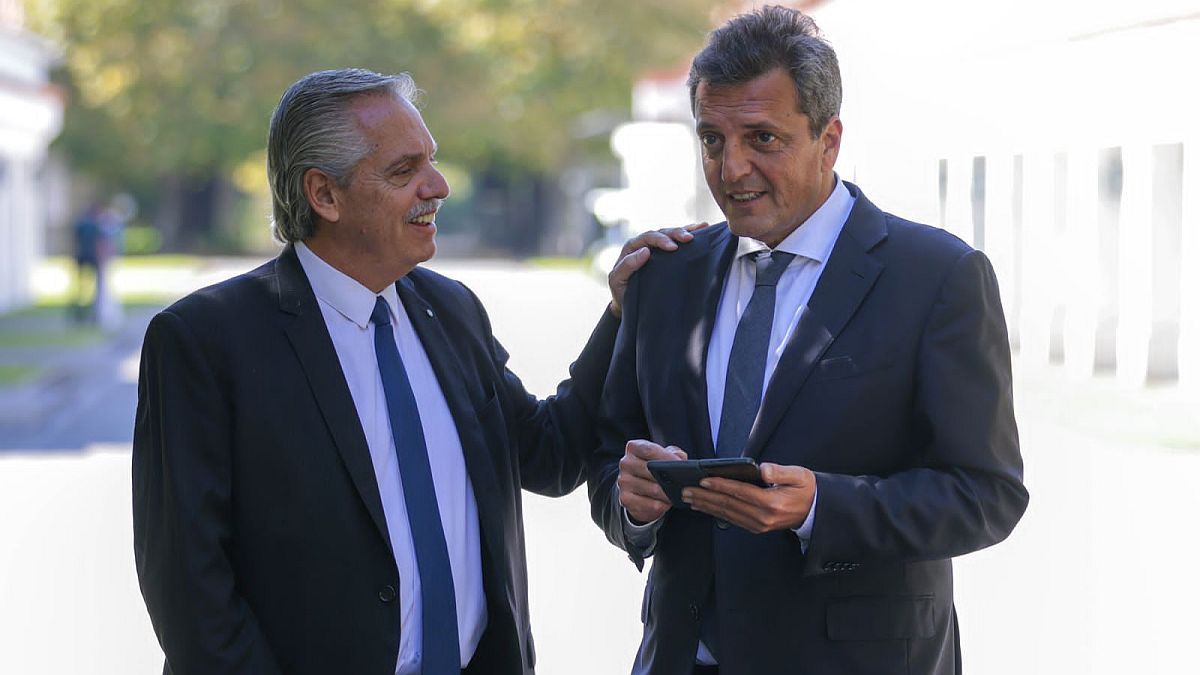The head of the Central BankMiguel Angel Pesce, and the Minister of Economy, Sergio Massa, They held this morning, in the Quinta de Olivos, separate meetings with the president Alberto Fernandez that served to bring closer the differences that separate both officials from the economic area, according to official sources Ambit.
In particular, the issue facing the head of the Palacio de Hacienda and the person in charge of monetary management was the interest rate level. As reported, Pesce was in favor of not rushing to raise the rate, while in Economy they indicated that an adjustment was necessary.
In this way, the new nominal annual rate (TNA) of the traditional fixed term and of the LELIQs is set at 81%, with an effective annual rate (TEA) of 118%, which is equivalent to an effective monthly rate of 6.75 %.
In recent days, the financial dollars have escalated, encouraged by the uncertainty about the continuity of Massa at the head of the economic leadership.
In this sense, the Ministry of Economy evaluated the market reaction after the dissemination of the photo of the president with Massa as positive, since from that moment the escalation of financial dollars stopped and the parity of bonds improved.
However, the market indicates that the situation remains complex to the extent that the lack of foreign currency remains unresolved and they await definitions regarding the foreign credits that Minister Massa is negotiating for a value over $10 billion with the IMF.
In the meeting that President Fernández held with his American counterpart, Joe Biden, The North American administration offered to build “a bridge” to help Argentina get out of the difficult situation in which it finds itself, but in return it asked to stop the advance of China in the country. However, the Argentine administration would not be giving signals in this regardaccording to diplomatic sources.
reproaches
After the inflation data for March -7.7%- that surprised the Government, the reproaches between Massa and Pesce were accentuated, in a link that was never oiled, they acknowledge in official sources.
For the Palacio de Hacienda is key to maintaining the interest rate at positive levels in order to retain deposits in pesos in the system and comply with a fundamental criterion of the agreement with the International Monetary Fund.
However, Pesce would have raised the need not to rush to raise rates considering both the recessive effect of this measure and its monetary impactaccording to comments from your environment, without solving the main problem that is the lack of foreign currency derived from the loss of exports caused by the drought – some u$s20,000 million-.
For their part, in the environment of the Ministry of Economy they imply that the low settlement of foreign exchange for the “agricultural dollar” would be the consequence of an inadequate implementation by the monetary leadership.
Yesterday there was no inflow of foreign currency through this channel, forcing the BCRA to sell US$197 million, in a day in which financial dollars rose between 2 and 3%. The situation was reversed today with a liquidation of the order of US$173 million.
“The Leliqs multiplied x10 in the current government administration to $12 billion currently, equivalent to US$60,000 million at the official rate or US$30,000 million at the financial exchange rate” points out a study by Ramiro Castiñeira.
The estimations of this economist show that the quasi-fiscal deficit of the BCRA, which arises from the payment of interest generated by its own debt, will reach 6% of GDP this yearstanding above the Treasury imbalance.
He calculates that the BCRA currently remunerates his debt with an interest rate of 113% TEA, which generates a monetary issue of $800 billion per month, equivalent to more than $12 trillion per year, constituting the main factor of monetary issue.
Source: Ambito




